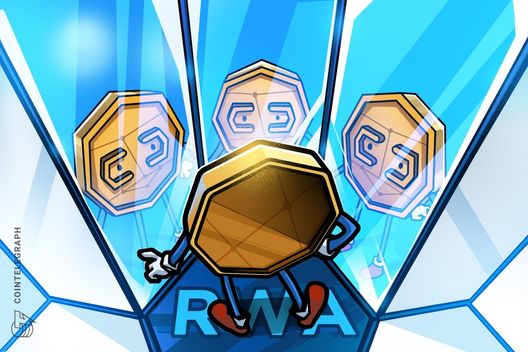
Opinion by: Vincent Kadar, CEO of Polymath
When a company sold tokenized shares in dozens of homes in Detroit that it did not actually own, it was more than a real estate scandal. It served as a warning to the entire real-world asset (RWA) sector.
The deal seemed modern, including blockchain tokens, fractional ownership and the promise of rental income.
In reality, however, many properties were vacant, in poor condition or not even legally theirs to sell.
The blockchain noted every token transfer smoothly. It lacked the necessary checks that would ensure the assets were real or were earning income.
A sector-wide risk
This is what happens when innovation outpaces oversight. Tokenization can deliver efficiency, liquidity and broader market access. Without proper protection, long-standing problems can also be exacerbated.
While the Detroit case focused on real estate, the same vulnerabilities exist in every category of RWAs. A tokenized bond holds no value if its cash flows are not secured. A tokenized commodity has no value if the underlying asset isn’t stored and verified. Without these protections, the entire process is a house of cards.
Tokenization does not guarantee transparency, enforceability or investor protection. It accelerates transactions, meaning bad actors can move just as quickly as legitimate market participants. For traditional markets, it is easy to think that the solution is to pause and review the value of tokenization.
Related: What is tokenomics? A beginner’s guide on supply and demand of cryptocurrencies
The answer is not to slow down the adoption of tokenization. Instead, the solution is to build systems with trust at the core. That way, bad actors cannot hide, and the risk of fraud can be significantly reduced.
An ecosystem of trust
When tokenization enters traditional markets, it must adhere to guidelines that foster trust in the market. Transactions should only involve verified participants, and ownership must connect to verified identities, not anonymous wallet addresses. Trading rules should be built into the technology, like who can buy, when to sell and under what conditions. This way, no one can bypass them.
Governance is equally essential. Markets need transparent processes to resolve disputes, recover emergency assets and upgrade systems safely. These are not optional features.
They are necessary if tokenized assets are to attract long-term institutional participation.
When compliance, governance and security are built into the foundation, investors and regulators can see that the system is designed to protect them. Without that trust, even the most advanced technology will struggle to gain lasting adoption.
The opportunity in emerging markets
This challenge isn’t just for developed financial centers. In emerging markets, old infrastructure makes it complicated and expensive to access capital. Tokenization can help overcome these issues. It allows for creating digital, flexible and globally connected markets.
Many economies in these areas already have high mobile usage. There is also growing demand for investment and interest in digital assets. These factors make it an excellent time for tokenization.
This chance could be lost without compliance with local regulations and strong investor protections. Building compliant and globally compatible infrastructure from the start can unlock new growth. It can also prevent the flaws that have held back traditional finance in these regions, such as ambiguous ownership records, slow cross-border settlements, high corruption risk and weak investor protections.
This can be done by directly embedding transparency and secure governance into the market infrastructure.
Responsible growth over hype
Some projects are already heading in the right direction. They use permissioned blockchains designed for regulated assets, adopt token standards that automatically enforce compliance and collaborate with reputable custodians to safeguard the underlying assets. These are not extras added on later. They are the protections that make tokenized markets in areas such as commodities, private credit and property credible to global capital markets.
The potential for real-world assets is enormous. The sector could unlock trillions in value, make markets more inclusive and increase efficiency in issuing and trading assets. Without the proper guardrails, the industry risks damaging trust before it matures.
The priority should not be who can launch the fastest. The real test will be who can create systems that withstand scrutiny for decades. Frameworks are not obstacles to progress.
They are what make progress sustainable.
Today’s choices will determine whether tokenization delivers on its promise or becomes another missed opportunity.
Opinion by: Vincent Kadar, CEO of Polymath.
This article is for general information purposes and is not intended to be and should not be taken as legal or investment advice. The views, thoughts, and opinions expressed here are the author’s alone and do not necessarily reflect or represent the views and opinions of Cointelegraph.


